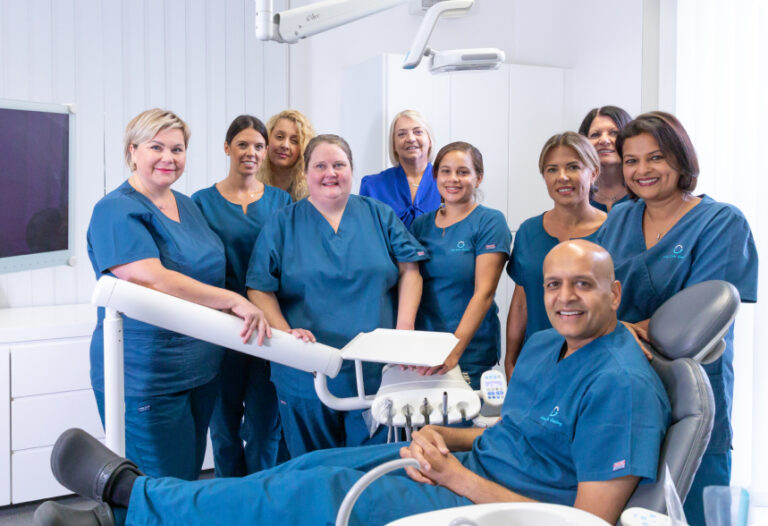Live Life Smiling
Ensuring your child has a pain free happy smile
This guide provides information to help you care for your child’s teeth. Children with cleft lip and/or palate have an increased risk of dental problems. Our aim is to help you ensure your child has a happy smile, nice teeth and no pain.
Are baby teeth important?
All teeth are important! Baby teeth hold the space for the adult teeth. If baby teeth have to be removed early this may lead to crowding and affect the result that can be achieved by the orthodontist (brace specialist) when your child is older and requires orthodontic treatment.
How can I keep my child’s teeth healthy?
Dental decay is avoidable and can cause pain and infection if left untreated. Do take your child to see your family dentist as soon as your child’s teeth start to come through. It is important that children get into the habit of regular dental check-ups before they need treatment. Taking a child to the dentist only when they have toothache is not a good introduction to dental care. If you have difficulty finding a dentist for your child, speak to a member of the Cleft Team who will be able to help you.
Do ask your dentist about fluoride varnish. This is like a ‘super strength’ toothpaste which can be applied at your dental practice. If applied on a regular basis, fluoride varnish will help to strengthen the teeth and help prevent tooth decay.
Do help brush your child’s teeth for them, at least twice a day – especially last thing at night – with a fluoride toothpaste, as soon as the teeth start to come through.
Do encourage your child to spit out after brushing but not to rinse the mouth as this reduces the protective effect of the toothpaste. Try not to let your child swallow the toothpaste.
Children with a cleft are thought to be at higher risk of dental decay so it is important for them to receive a higher dose of fluoride than that found in many children’s toothpastes.
For children aged 0-3 years: Use a soft ‘baby’ toothbrush. Use only a smear of toothpaste on the brush, containing no less than 1,000ppm fluoride (ppm – this tells you the amount of fluoride in a toothpaste and this information is usually found on the toothpaste tube or box). Don’t forget to gently brush any teeth in the cleft area.


For children 3 years and older: Use a small-headed children’s toothbrush. Use a pea-sized amount of toothpaste containing 1,350-1,500ppm fluoride. Children are not able to brush their teeth effectively themselves until at least the age of 7-8 years, but they like to try. Give your child a toothbrush to brush themselves but it is important that you ‘finish-off’ the brushing.
Make brushing fun! Experiment with different flavours of adult toothpaste to find one your child likes.
When do teeth start to come through?
Baby teeth start to come through around 6 months of age, although this can be later in some children. Occasionally children are born with a tooth. A child will usually have all their baby teeth by around 3 years of age. Adult teeth start to come through around 6 years of age, often before any of the baby teeth are lost.
How may the cleft affect the teeth?
When a child has a cleft that goes through the gum area, the teeth in the line of the cleft may be missing, misplaced, poorly formed or there may be extra teeth. The bone is missing where the cleft goes through the gum and there is usually a gap between the teeth on either side of the cleft. It is quite common for teeth in the cleft area to appear twisted or higher up than the other front teeth and to come through in the roof of the mouth behind the front teeth.
Have a healthy diet
After 12 months of age, don’t give your child a bottle at bedtime, as this may lead to tooth decay. Avoid sugary foods and drinks between meals. Only plain water or milk should be consumed between meals. Try to keep diluted fruit juice and squash to meal times. Fresh fruit juice is highly acidic and can cause tooth damage. If fruit juice is consumed, then dilute the juice with water and drink through a straw to try to reduce tooth contact and minimise tooth damage. Don’t give your child fizzy drinks as even sugar-free or diet fizzy drinks (including fizzy water) cause damage to teeth because they are acidic. After weaning, only plain water should be given at night if your child is thirsty. Some children may be on high energy supplements which are often very high in sugar but are necessary for the child’s general health. These children are at higher risk of dental decay and so need to be seen by the dentist more frequently.
Is there anything else I can do to help keep my child’s mouth healthy?
It is very important to brush last thing at night and then try to avoid your child eating or drinking anything other than plain water after this. If you would like more help with brushing your child’s teeth, be sure to ask your dentist or book in to see our hygienist.

